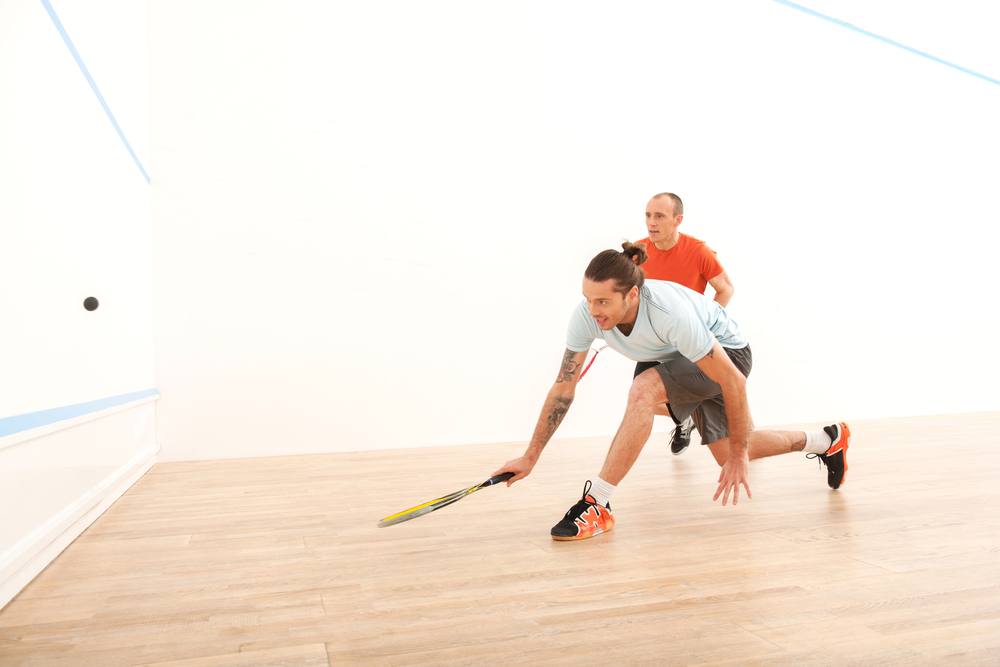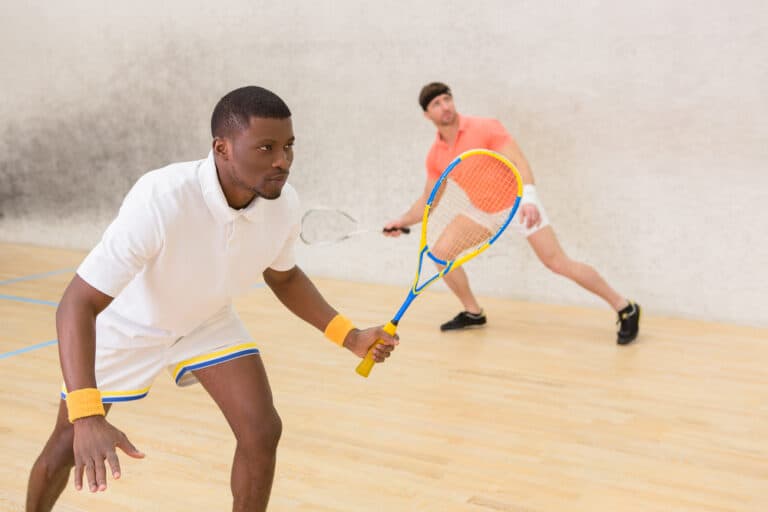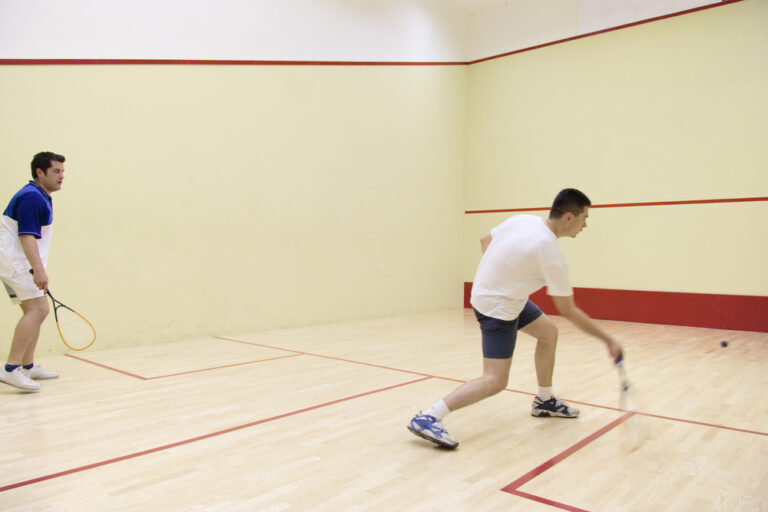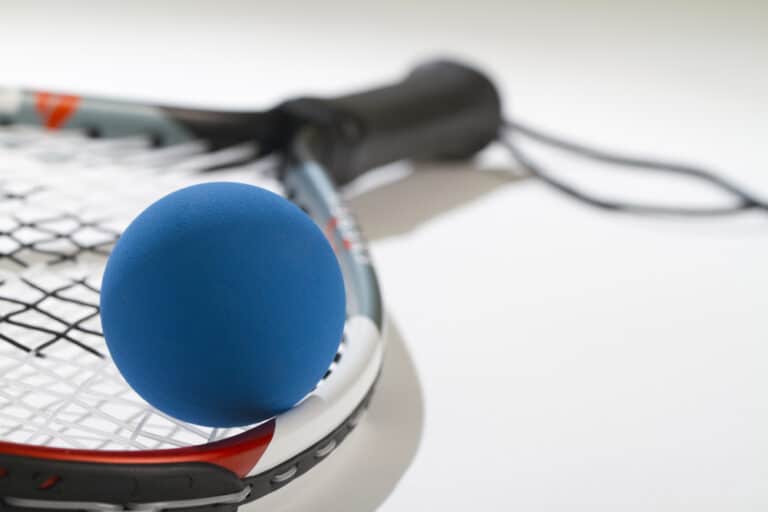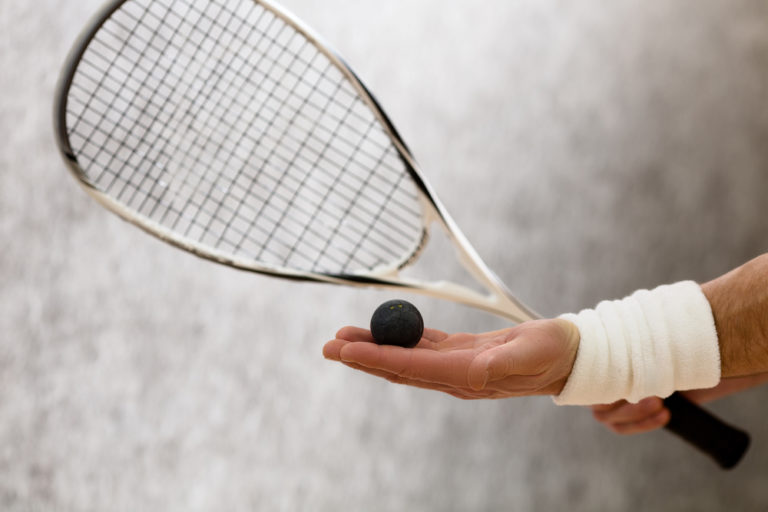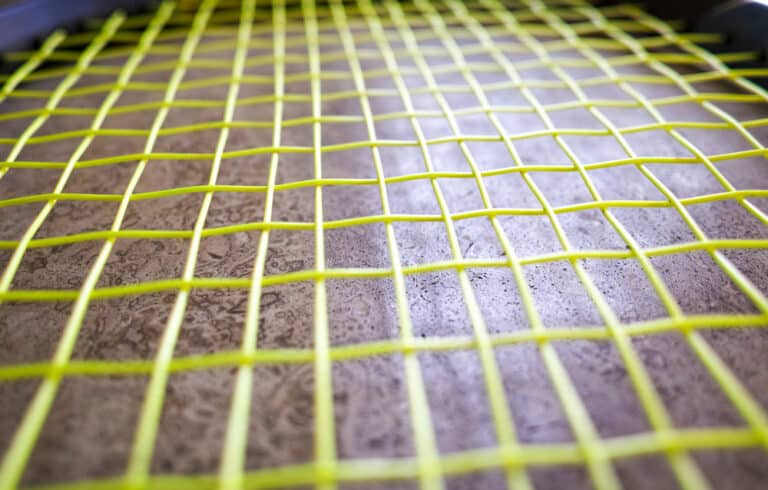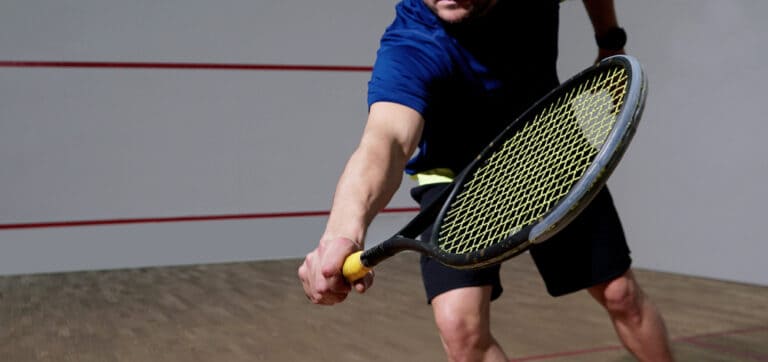Is Speed An Important Skill For Squash Players?
We may have varying beliefs on what matters most during a game of squash – stamina, technique, confidence – they all certainly have a role to play. What then, of speed? I’ve always favored it for squash and other sports and find it an invaluable tool. So, is speed an essential skill for squash players?
Speed is the most crucial skill for a squash player and relates to a player’s reaction time. A fast reaction time makes players more perceptive, allowing them to quickly process new information about the ball direction, player positioning, and footwork. It improves court presence and motor skills.
Let’s look at the science behind reaction time and how it translates into a better squash performance. We’ll also look at ways to improve your reaction time and speed on the court, as well as things to watch out for that hinder your reaction time.
Is Speed An Important Skill For Squash Players?
Since squash does not require running long distances or quickly carrying the ball to a different location, the term speed in squash can be more accurately defined as reaction time. Reaction time is the most critical skill for squash players of all skill levels.
Among factors like skill & technique, tactical ability, or motivation & confidence, reaction time is the requirement that will make the most significant difference to your performance during a match.
The time that passes between the moment we observe something and the moment we react to it determines our reaction time. Neurologically, it relates to our capacity to recognize, understand, and respond to stimuli.
Squash includes an unpredictable element where you won’t always know how the ball will bounce or from which direction it will come. A fast reaction time will enable you to understand these kinds of unknown variables more quickly, allowing you to make the rapid directional movements necessary to produce the best outcome.
These movements may include accelerating or decelerating over short distances, quick and frequent turning, side-stepping, and lunging. In fact, match analysis shows that over 40 percent of squash movements are zigzag patterns that happen within 1 meter of the court’s T position.
How Can You Improve Your Reaction Time For Squash?
You can improve your reaction time by doing exercises and activities that will enhance your physical and perceptive abilities.
Having a well-honed body goes hand-in-hand with guaranteeing a healthy reaction time. Squash players want to ensure they have strong quadriceps (quads for short) because they can more easily make big lunges and get out of them quickly.
It also helps with quick turns, twists, and changing body position.
An Exercise To Improve Visual Reaction And Eye Co-Ordination
The visual exercise will require two people to perform successfully. Have person A hold a squash or tennis ball in each hand with their front facing the second person. Person B should stand about five feet away from person A and face them so that both people face one another.
Person A must lift both arms simultaneously but release only one of the balls. Person B must catch the ball without having it bounce more than once.
The point of the exercise is to improve reaction time by focusing on both balls to determine whether the left or right ball will bounce and time their footwork accordingly.
An Exercise To Help With Audio Reaction And Perception
This next exercise helps improve your reaction to audio cues, and although it is easier with two people, you can choose to do it alone, too, if you have a wall behind you.
Have person A stand facing forward with a single squash or tennis ball. Person B should stand about five feet in front of person A but with their backs showing to person A.
Person A will bounce the ball toward person B, angling it slightly to the left or right, and Person B must listen to the bounce to determine which side. Afterward, they must turn around and catch the ball without letting it bounce a second time.
An Exercise To Improve How Well You Process Information
This exercise is excellent for improving a squash player’s overall motor skills.
You will need two people and four traffic cones or similar objects. Place the cones in a square about three feet apart, and have person A stand in the middle of the cones while person B stands in front, facing person A.
Person B will point to a cone while person A needs to respond quickly and touch the cone that Person B decides.
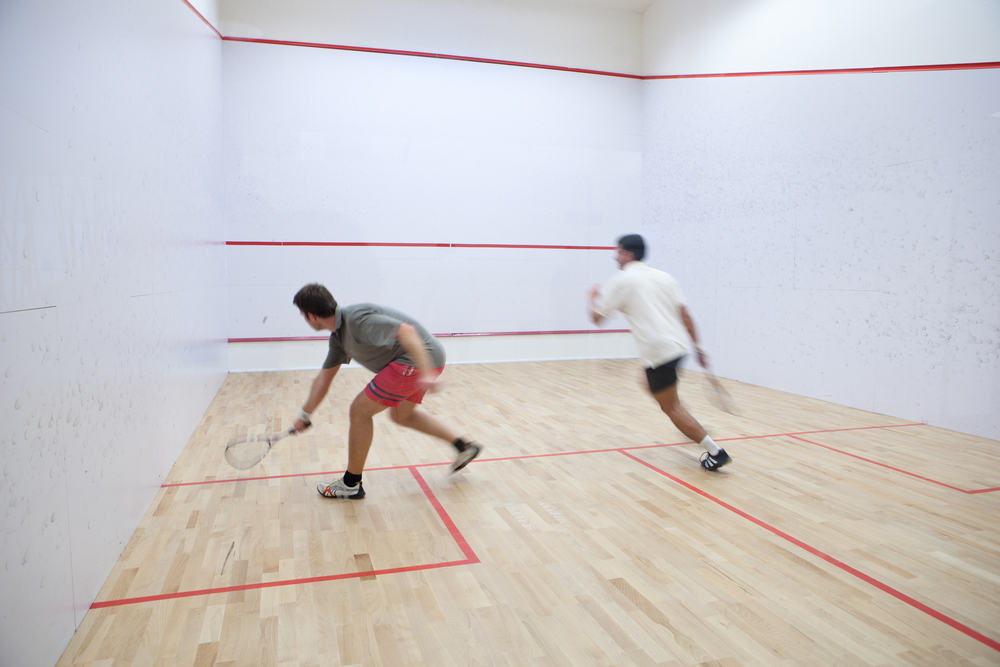
An Exercise To Combine Visual & Footwork Reaction
This exercise is valuable if you want to focus on building muscle memory by using specific footwork during your reactions. You will require two people and a court to do this exercise.
Have person A hold a squash or tennis ball in each hand. Person B should stand about two or three feet away from Person A with their squash racket ready to swing.
Similar to a previous exercise, person A will raise both arms simultaneously but drop only one ball. Person B must quickly discern which ball will bounce and get ready to hit it without having it bounce more than once.
As a result, person B must focus on reaction with their footwork to get to the ball.
What Factors Can Hinder Your Reaction Time For Squash?
If you don’t practice enough, lack sleep, play in high temperatures or consume alcohol & unhealthy foods, it will reduce your reaction time on the court.
More than improving technique, practice or training is designed to prepare you for an unexpected event. When you skip out on practice, you cut yourself off from the learning experience, and when you experience it on the court, it takes much longer to process and adds to your reaction time.
For instance, crossing the road would be much more challenging if you’ve never seen a car before. If you have, your first instinct would be to spot a traffic light or pedestrian crossing, effectively cutting your processing time in half.
If we treat our bodies well, they will respond in kind. When we don’t get enough sleep, we’ll suffer from physical and mental fatigue, impacting how quickly we can perceive and process information and how well we react to a shot.
Environmental factors like heat or cold also slow our reaction time. Lastly, certain foods and beverages like alcohol, candy, and junk food can make the body lethargic and negatively affect its ability to detect stimuli.
Conclusion
Speed should be the priority for any serious squash player. It presents itself in the player’s reaction time – eye and hand co-ordination. It determines the player’s ability to make offensive and defensive shots and often determines the outcome of a game.
Sources
- https://www.researchgate.net/figure/Dimensions-and-route-for-the-squash-specific-test-of-change-of-direction-speed_fig1_26331808
- https://www.youtube.com/watch?v=X-LrsO7XhMk
- https://www.youtube.com/watch?v=fcUtdrgEIpI
- https://www.cognifit.com/science/cognitive-skills/response-time
- https://www.youtube.com/watch?v=URX-wYFpzC4

